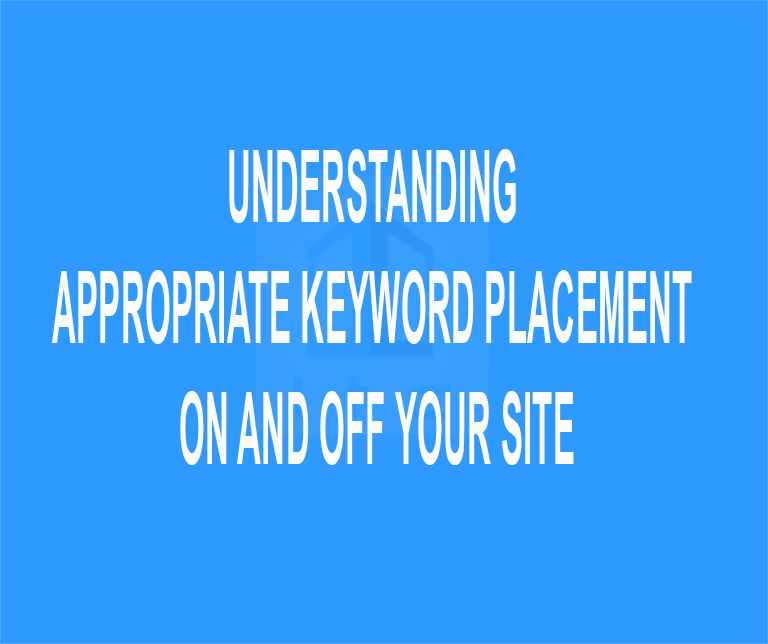The world of search engine optimization has evolved substantially over the past few years. Today, businesses have to work a little harder and more diligently, in order to get ahead. Some activities that were acceptable in the past could very well get you penalized in the present. Therefore, it is essential to carefully plan your future moves, while avoiding haphazard activities. One of the biggest mistakes webmasters make is failing to place their keywords in the appropriate locations. Below, you will learn when and how to use keywords effectively.

Identifying Valuable Keywords
As the old saying goes, almost everything has been done before. This is especially true when it comes to SEO. If you run a small vacuum cleaner business and intend to sell these products to consumers, you will find some degree of competition. Originality is nearly nonexistent. Nonetheless, it is still possible for you to find original keywords. By using Google’s Keyword Planner and other similar tools, you will be able to sort through keywords based on their search volume and competition level. To get a head start, it is best to choose keywords with a high search volume and very low competition.

On-Site Placement
After you’ve compiled a list of potentially effective keywords, it is time to optimize your site with these keywords. Proper on-site optimization can truly make a world of difference and will ultimately help get your site ranked for the appropriate words. Obviously, it is pertinent to make sure your keywords appear in your written content a sufficient number of times. Generally, your primary keyword should appear at least 3 or 4 times per 100 words. Secondary keywords can be used less frequently.
At the same time, you should remember to use your keywords in tags. This includes your site’s title, H2 and H3 tags. And of course, it is a good idea to use the keyword in your site’s meta description. Using pictures on your website and adding the keyword in the name and alt tag is also wise. This combination will ensure your site is search engine friendly and ready to be ranked for your selected keywords. Some also suggest bolding and italicizing keywords.
With a little experimentation, you will be able to find a strategy that works exceptionally well for you.
Off-Site Links
Unfortunately, off-site optimization is far more difficult and immensely more time consuming. Nonetheless, it is a good idea to learn precisely what is anchor text optimization. If you fail to understand the basics, you will never be able to achieve your goals and rise above your competition in the rankings. Obviously, you will want your keywords to be placed in the anchor text. And it should be no secret that you want these links to be placed on high-quality websites.
Still, it is essential to be cautious. Google’s search engine algorithm has gotten more effective over the years. If you over optimize, there is a possibility that your efforts will backfire and lead to your site being penalized. Therefore, you should learn the tricks of the trade before rushing in blindly.
Internal Links
While you’re at it, you’ll want to include links on your own website to your website. For instance, you can create internal links from page to page, while using the appropriate keywords. This will score you a lot of points with Google, while simultaneously increasing the number of time visitors remain on your site.
Meta-Keywords
Meta-keywords have lost their value over the years. Nonetheless, it is a good idea to make sure they’re still present on each of your pages. Simply create a list of keywords and use them for each and every one of your pages. This will help you avoid a hassle while ensuring your keywords are always present.
Be Careful With Headers
Headers undeniably receive greater weight than regular body text. Nonetheless, you need to be cautious when optimizing your headers. Try to closely match your headers to your keywords, but do not over optimize. Doing so could backfire and get you penalized by Google.
File Name
While you’re at, you’ll want to make sure your file names include your keyword. They should be constructed as “yourkeyword.html” or something similar. This is one of the many reasons people prefer the WordPress content management system. This software gives them the ability to setup search-engine friendly permanent links very easily. Also, this is true for pictures as well. Always make sure your keywords are placed in your picture’s file names as well.
You can also stay updated by subscribing to iTechCode.